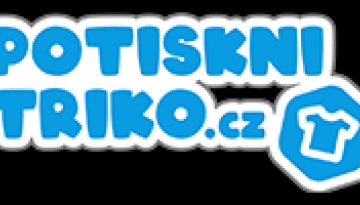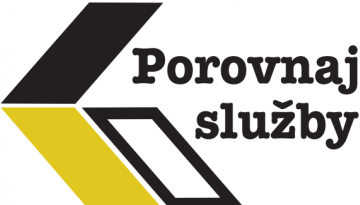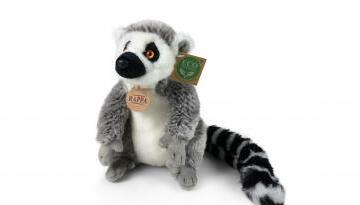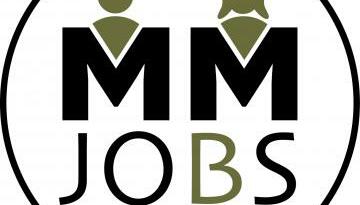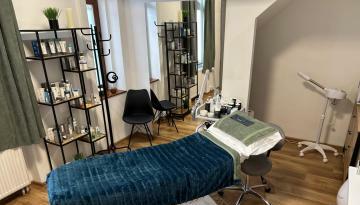Monitorujeme 1675 zdrojov

 Google Dooles 05.07.2021 05:45
Date: July 3, 2021
Today’s Doodle, illustrated by Baltimore-based guest artist , celebrates the 122nd birthday of Jewish, German-born British neurologist Professor Sir Ludwig “Poppa” Guttmann, founder of the Paralympic movement.
Guttmann was born in Tost, Germany on this day in 1899 and went on to receive his M.D. in 1924. He subsequently began research on spinal cord injuries and performed several neurosurgical procedures, rising to prominence as one of Germany’s top neurosurgeons by his early thirties. However, with the rise of the Nazi party and the passing of the Nuremberg Laws in 1933, Guttmann was prevented from practising medicine professionally. Following Kristallnacht in 1938 and the increasing persecution of Jews in Germany, Guttmann was forced to leave Germany with his family and was able to escape to England in 1939.
In England, Guttmann advanced his research in paraplegia. In 1944, he put his innovative approach into practice as the director of the National Spinal Injuries Center at Stoke Mandeville Hospital. In 1948, he organized a 16-person archery contest, one of the first official competitive sporting events for wheelchair users. Later called the “Stoke Mandeville Games” or the “Olympics for the Disabled,” the competition demonstrated the power of elite sport to break down barriers for disability and garnered the attention of global medical and sporting communities.
In 1960, Guttmann facilitated the International Stoke Mandeville Games, following the 1960 Summer Olympics, the first of many Paralympic Games. His passion for patient care never faltered—he also founded the International Medical Society of Paraplegia and the British Sports Association for the Disabled in 1961. He received numerous accolades for his contributions, the highest among which was being knighted by Her Majesty the Queen in 1966.
Today, Paralympic athletes are rightfully recognized for their skills and achievements. The Paralympic Games continue to be a driving force for promoting the rights and independence of people with disabilities, with a lasting impact on equal treatment and opportunity.
Happy birthday, Prof. Sir Ludwig Guttmann!
Founder of the Paralympic Movement, Professor Sir Ludwig Guttmann was the medical pioneer who created the first Paralympic Games. Learn more about his story and legacy .
Special thanks to the National Paralympic Heritage Trust and Professor Sir Ludwig Guttmann’s Family for their partnership on this project. Below his family and the Trust share their thoughts on the Doodle and Ludwig Guttmann’s legacy.
From the very first sporting event at the National Spinal Injuries Centre in 1948, my father said he wanted the Olympics for the disabled. His dream and pioneering vision certainly came true.
- Eva Loeffler OBE, daughter of Professor Sir Ludwig Guttmann
We are delighted to be celebrating the incredible Paralympic legacy of Professor Sir Ludwig Guttmann on the anniversary of his birth 122 years ago, with just weeks to go before Tokyo 2020. He was there in 1964 for the second Paralympic Games and his spirit lives on.
- Vicky Hope-Walker, CEO of the NPHT
Pictured: Professor Sir Ludwig Guttmann at Stoke Mandeville Games 1953
Photo credit: Courtesy of WheelPower British Wheelchair Sport
Pictured: Professor Sir Ludwig Guttmann and Team boarding a flight to the Rome 1960 Paralympic Games
Photo credit: Courtesy of International Wheelchair and Amputee Sports Federation
Guest Artist Q&A with Ashanti Fortson
Today’s Doodle was illustrated by Baltimore-based guest artist . Below, they share their thoughts behind the making of this Doodle:
Q. Why was this topic meaningful to you personally?
A. Living with disability has many facets to it, but one of the most acute struggles of disability—no matter the form that disability takes— is the constant navigation, negotiation, and denial of equitable access. It's baked into many parts of society, including athletics, and there aren't many non-disabled people who are willing to dedicate so much of themselves to helping create accessible and equitable spaces for disabled people. We haven't often had non-disabled allies who have done so much to help amplify our voices, so Professor Guttmann's story and his work in athletics resonate deeply with me.
Q. Did you draw inspiration from anything in particular for this Doodle?
A. Despite me being a lifelong bookish artist with no athletic inclinations, both of my parents are professional athletes and coaches. I grew up around a lot of athletes, both professional and not, and I've been lucky to gain a deep, firsthand appreciation for the beauty of sports. In depicting the forms and movements of Paralympic athletes for this Doodle, I really wanted to channel how awesome the capabilities of human bodies are. I feel quite lucky that I was able to feature so many athletic vignettes to spell out G-O-O-G-L-E!
Q. What was your creative process for this Doodle artwork?
A. The bulk of my work for this Doodle was in research and figuring out the puzzle of how to depict each of the letters in the form of a Paralympic athlete. I spent a lot of time looking into the different sports involved in the Paralympics, going through reference photos, and seeing how I could get everything to work. I love problem-solving, so this was a very fun project to work on! The biggest challenge at first was the letter E, but the wonderful art director on this Doodle suggested that I depict Professor Guttmann shaking hands with an athlete – which solved that visual problem nicely.
I worked digitally for this Doodle, which means that I was researching, sketching, and painting the final artwork on my drawing tablet. That made my research and sketching processes go smoothly, as I was able to revise my sketches more easily than if I were sketching on paper. For the final artwork, I wanted to achieve a painterly, expressive feeling to help emphasize the movement and dynamism of the athletes. Even though I worked digitally, my approach was very similar to how I would draw or paint an image on paper.
Q. What message do you hope people take away from your Doodle?
A. There's a tendency to see accomplished disabled people and label them "inspiring" through a non-disabled lens. While the intent is positive, that attitude ends up dehumanizing us: it frames us as amazing "in spite of" our disabilities, and it doesn't acknowledge the systemic barriers that prevent many disabled people from achieving their goals. Above all, I hope that my Doodle can help spark thoughts about how we can understand each other without dehumanization, what creating equitable access can mean, and how we can each go above and beyond to create equitable and accessible spaces for each other.
Early drafts of the Doodle below
Location:
,
,
,
,
,
,
,
,
,
,
,
,
,
,
,
,
,
,
,
,
,
,
Tags:
,
,
,
,
,
,
,
Google Dooles 05.07.2021 05:45
Date: July 3, 2021
Today’s Doodle, illustrated by Baltimore-based guest artist , celebrates the 122nd birthday of Jewish, German-born British neurologist Professor Sir Ludwig “Poppa” Guttmann, founder of the Paralympic movement.
Guttmann was born in Tost, Germany on this day in 1899 and went on to receive his M.D. in 1924. He subsequently began research on spinal cord injuries and performed several neurosurgical procedures, rising to prominence as one of Germany’s top neurosurgeons by his early thirties. However, with the rise of the Nazi party and the passing of the Nuremberg Laws in 1933, Guttmann was prevented from practising medicine professionally. Following Kristallnacht in 1938 and the increasing persecution of Jews in Germany, Guttmann was forced to leave Germany with his family and was able to escape to England in 1939.
In England, Guttmann advanced his research in paraplegia. In 1944, he put his innovative approach into practice as the director of the National Spinal Injuries Center at Stoke Mandeville Hospital. In 1948, he organized a 16-person archery contest, one of the first official competitive sporting events for wheelchair users. Later called the “Stoke Mandeville Games” or the “Olympics for the Disabled,” the competition demonstrated the power of elite sport to break down barriers for disability and garnered the attention of global medical and sporting communities.
In 1960, Guttmann facilitated the International Stoke Mandeville Games, following the 1960 Summer Olympics, the first of many Paralympic Games. His passion for patient care never faltered—he also founded the International Medical Society of Paraplegia and the British Sports Association for the Disabled in 1961. He received numerous accolades for his contributions, the highest among which was being knighted by Her Majesty the Queen in 1966.
Today, Paralympic athletes are rightfully recognized for their skills and achievements. The Paralympic Games continue to be a driving force for promoting the rights and independence of people with disabilities, with a lasting impact on equal treatment and opportunity.
Happy birthday, Prof. Sir Ludwig Guttmann!
Founder of the Paralympic Movement, Professor Sir Ludwig Guttmann was the medical pioneer who created the first Paralympic Games. Learn more about his story and legacy .
Special thanks to the National Paralympic Heritage Trust and Professor Sir Ludwig Guttmann’s Family for their partnership on this project. Below his family and the Trust share their thoughts on the Doodle and Ludwig Guttmann’s legacy.
From the very first sporting event at the National Spinal Injuries Centre in 1948, my father said he wanted the Olympics for the disabled. His dream and pioneering vision certainly came true.
- Eva Loeffler OBE, daughter of Professor Sir Ludwig Guttmann
We are delighted to be celebrating the incredible Paralympic legacy of Professor Sir Ludwig Guttmann on the anniversary of his birth 122 years ago, with just weeks to go before Tokyo 2020. He was there in 1964 for the second Paralympic Games and his spirit lives on.
- Vicky Hope-Walker, CEO of the NPHT
Pictured: Professor Sir Ludwig Guttmann at Stoke Mandeville Games 1953
Photo credit: Courtesy of WheelPower British Wheelchair Sport
Pictured: Professor Sir Ludwig Guttmann and Team boarding a flight to the Rome 1960 Paralympic Games
Photo credit: Courtesy of International Wheelchair and Amputee Sports Federation
Guest Artist Q&A with Ashanti Fortson
Today’s Doodle was illustrated by Baltimore-based guest artist . Below, they share their thoughts behind the making of this Doodle:
Q. Why was this topic meaningful to you personally?
A. Living with disability has many facets to it, but one of the most acute struggles of disability—no matter the form that disability takes— is the constant navigation, negotiation, and denial of equitable access. It's baked into many parts of society, including athletics, and there aren't many non-disabled people who are willing to dedicate so much of themselves to helping create accessible and equitable spaces for disabled people. We haven't often had non-disabled allies who have done so much to help amplify our voices, so Professor Guttmann's story and his work in athletics resonate deeply with me.
Q. Did you draw inspiration from anything in particular for this Doodle?
A. Despite me being a lifelong bookish artist with no athletic inclinations, both of my parents are professional athletes and coaches. I grew up around a lot of athletes, both professional and not, and I've been lucky to gain a deep, firsthand appreciation for the beauty of sports. In depicting the forms and movements of Paralympic athletes for this Doodle, I really wanted to channel how awesome the capabilities of human bodies are. I feel quite lucky that I was able to feature so many athletic vignettes to spell out G-O-O-G-L-E!
Q. What was your creative process for this Doodle artwork?
A. The bulk of my work for this Doodle was in research and figuring out the puzzle of how to depict each of the letters in the form of a Paralympic athlete. I spent a lot of time looking into the different sports involved in the Paralympics, going through reference photos, and seeing how I could get everything to work. I love problem-solving, so this was a very fun project to work on! The biggest challenge at first was the letter E, but the wonderful art director on this Doodle suggested that I depict Professor Guttmann shaking hands with an athlete – which solved that visual problem nicely.
I worked digitally for this Doodle, which means that I was researching, sketching, and painting the final artwork on my drawing tablet. That made my research and sketching processes go smoothly, as I was able to revise my sketches more easily than if I were sketching on paper. For the final artwork, I wanted to achieve a painterly, expressive feeling to help emphasize the movement and dynamism of the athletes. Even though I worked digitally, my approach was very similar to how I would draw or paint an image on paper.
Q. What message do you hope people take away from your Doodle?
A. There's a tendency to see accomplished disabled people and label them "inspiring" through a non-disabled lens. While the intent is positive, that attitude ends up dehumanizing us: it frames us as amazing "in spite of" our disabilities, and it doesn't acknowledge the systemic barriers that prevent many disabled people from achieving their goals. Above all, I hope that my Doodle can help spark thoughts about how we can understand each other without dehumanization, what creating equitable access can mean, and how we can each go above and beyond to create equitable and accessible spaces for each other.
Early drafts of the Doodle below
Location:
,
,
,
,
,
,
,
,
,
,
,
,
,
,
,
,
,
,
,
,
,
,
Tags:
,
,
,
,
,
,
,
NEWS.SK odporúča
Top firmy
Nie sú nájdené žiadne články.
Nie sú nájdené žiadne články.










